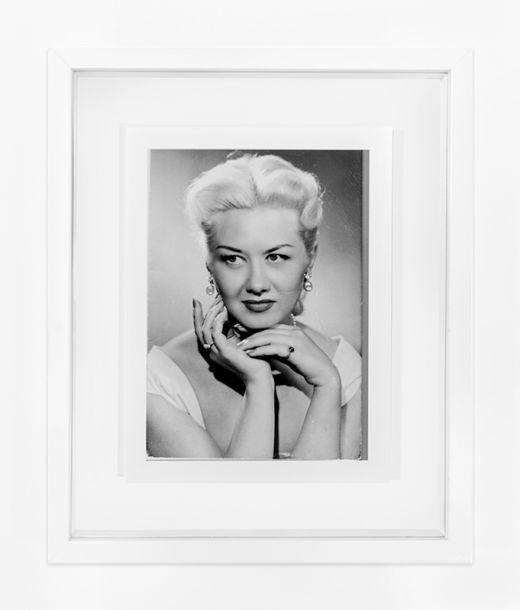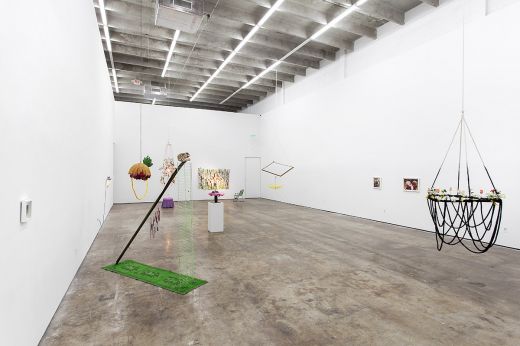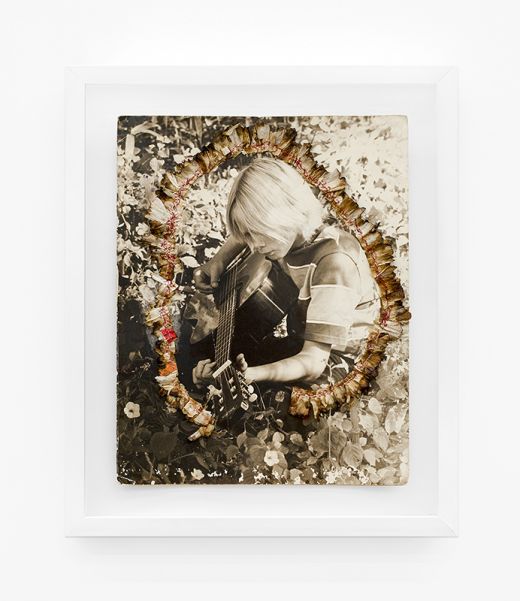Autumn Casey, Agalma
Hunter Braithwaite

Half of Autumn Casey's Elysian Fields, 2014. 9.5" x 11" framed photo.
September 6 – October 24, 2014
Agalma begins near the end. In the project gallery, a video called “Elysian Fields” features an elderly woman siting in a chair in the middle of a field, shoulders bare, flowers in her close-cropped hair, singing to Frank Sinatra. She is the artist’s grandmother: former showgirl, current Alzheimer’s patient. Nowadays, she’s only truly herself when she hears the songs of her youth. She emotes, she puckers her lips, she still has beautiful eyes. Sometimes the lyrics flood back. Sometimes she forgets them and you see frustration come across her face like a curtain. Through it all Casey’s camera stays close, shifts in and out of focus, heaving.
The piece overpowers. To watch it is to watch the mind swim back to the shore of youth, and almost make it. Go see it. Sometime after the 16-minute run time, you’ll come to, exhausted, realizing that what you’ve been watching has repeated itself. Then you’ll get up and leave. Just out of the room, you see an old portrait of that same woman, beautiful and crisp in that mid-century way. Which one is the shadow of which?

Installation View. Photo courtesy Zach Balber
After the sheer force of the video, these sculptures, many of which seem stuck together with Nicorette, take a moment to shine. The materials list reads like a game of exquisite corpse between John Waters and Divine, and the flims-and-gunk ratio approaches that of Rachel Harrison and Iza Genzken. But it’s just as unfair to consider these works derivative as to say that suburban lives are derivative. Similar doesn’t mean same. Casey brings enough to this swap-shop formalism to come away with something that is hers alone. She owns these materials because they are hers, reflecting back not only on the narratives established in the show, but those that compose her life and the lives of her friends and family.

Autumn Casey, Roach Rainbow, 2014. Original photograph of artist’s father, sewn roaches.










